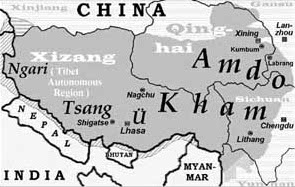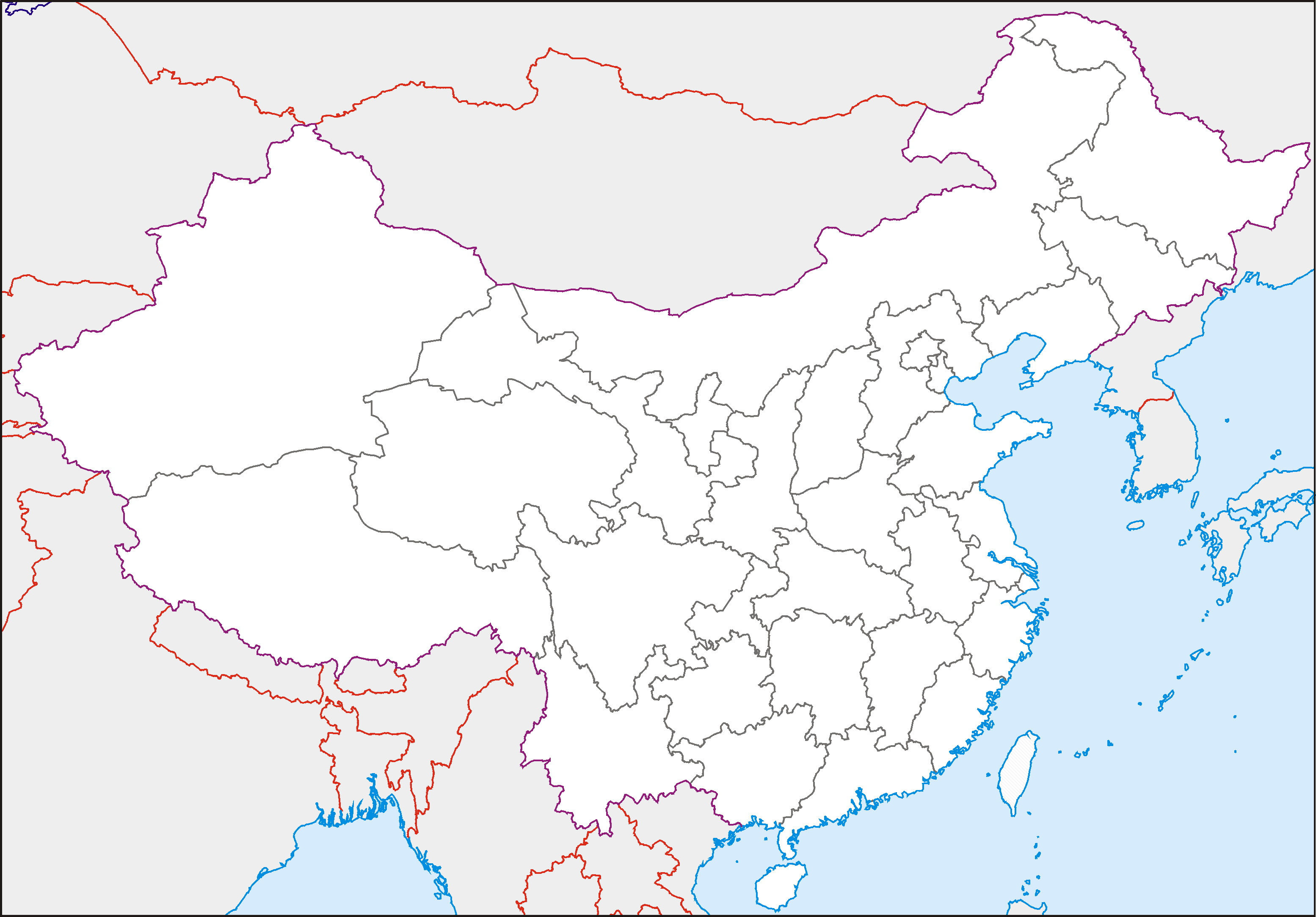|
Drowai Gonpo
Drowai Gonpo (aGro bai mgon po, 1508–1548) was a king who wielded power in parts of Central Tibet from 1524 to 1548. He belonged to the Phagmodrupa dynasty which reigned over Tibet or parts of it from 1354 to the early 17th century. Drowai Gonpo was a son of the ruler Ngawang Tashi Drakpa (d. 1564), the last important leader of the dynasty and known by the Fifth Dalai Lama as the "King of Tibet". His mother was a lady of the Rinpungpa family, which was dominant in the Tsang region of West Central Tibet. In 1524 Drowai Gonpo was established as sub-ruler in Gongri Karpo to the west of the Nêdong palace where his father dwelt. Like his father he received the royal title ''gongma'', "the high one". He married a lady from Chontse who gave birth to Ngawang Drakpa Gyaltsen. In another marriage, with a daughter of the Ganden lord, he sired Sonam Drakpa Gyaltsen (d. 1566?) and Namgyal Rabten (d. 1568?). The move of a part of the Phagmodrupa family to Gongri Karpo caused serious inter ... [...More Info...] [...Related Items...] OR: [Wikipedia] [Google] [Baidu] |
Central Tibet
Central is an adjective usually referring to being in the center of some place or (mathematical) object. Central may also refer to: Directions and generalised locations * Central Africa, a region in the centre of Africa continent, also known as Middle Africa * Central America, a region in the centre of America continent * Central Asia, a region in the centre of Eurasian continent * Central Australia, a region of the Australian continent * Central Belt, an area in the centre of Scotland * Central Europe, a region of the European continent * Central London, the centre of London * Central Region (other) * Central United States, a region of the United States of America Specific locations Countries * Central African Republic, a country in Africa States and provinces * Blue Nile (state) or Central, a state in Sudan * Central Department, Paraguay * Central Province (Kenya) * Central Province (Papua New Guinea) * Central Province (Solomon Islands) * Central Province, Sri Lank ... [...More Info...] [...Related Items...] OR: [Wikipedia] [Google] [Baidu] |
Phagmodrupa Dynasty
The Phagmodrupa dynasty or Pagmodru (, ; ) was a dynastic regime that held sway over Tibet or parts thereof from 1354 to the early 17th century. It was established by Tai Situ Changchub Gyaltsen of the Lang () family at the end of the Yuan dynasty. The dynasty had a lasting importance on the history of Tibet; it created an autonomous kingdom after Yuan rule, revitalized the national culture, and brought about a new legislation that survived until the 1950s. Nevertheless, the Phagmodrupa had a turbulent history due to internal family feuding and the strong localism among noble lineages and fiefs. Its power receded after 1435 and was reduced to Ü (East Central Tibet) in the 16th century due to the rise of the ministerial family of the Rinpungpa. It was defeated by the rival Tsangpa dynasty in 1613 and 1620, and was formally superseded by the Ganden Phodrang regime founded by the 5th Dalai Lama in 1642. In that year, Güshi Khan of the Khoshut formally transferred the old possessi ... [...More Info...] [...Related Items...] OR: [Wikipedia] [Google] [Baidu] |
Tibet
Tibet (; ''Böd''; ) is a region in East Asia, covering much of the Tibetan Plateau and spanning about . It is the traditional homeland of the Tibetan people. Also resident on the plateau are some other ethnic groups such as Monpa people, Monpa, Tamang people, Tamang, Qiang people, Qiang, Sherpa people, Sherpa and Lhoba peoples and now also considerable numbers of Han Chinese and Hui people, Hui settlers. Since Annexation of Tibet by the People's Republic of China, 1951, the entire plateau has been under the administration of the People's Republic of China, a major portion in the Tibet Autonomous Region, and other portions in the Qinghai and Sichuan provinces. Tibet is the highest region on Earth, with an average elevation of . Located in the Himalayas, the highest elevation in Tibet is Mount Everest, Earth's highest mountain, rising 8,848.86 m (29,032 ft) above sea level. The Tibetan Empire emerged in the 7th century. At its height in the 9th century, the Tibet ... [...More Info...] [...Related Items...] OR: [Wikipedia] [Google] [Baidu] |
Ngawang Tashi Drakpa
Ngawang Tashi Drakpa (, 1488–1564) was a king of Tibet who ruled in 1499–1554 and 1556/57–1564. He belonged to the Phagmodrupa Dynasty which was the dominating regime in Tibet from 1354 to 1435 and maintained a degree of authority until the early 17th century. His rule is sometimes considered to be the last of importance in the history of the dynasty. Political background The earliest years of Ngawang Tashi Drakpa's life was also a time when the political authority of the Phagmodrupa regime was at its nadir. The dynasty originally wielded strong executive power over Central Tibet ( Ü and Tsang), but after 1435 the various fiefs gained an autonomous position. In particular the royal court in Nêdong was overshadowed by the Rinpungpa family, whose principal stronghold was Samdrubtse (Shigatse in Tsang, West Central Tibet). This family acted as patrons to the Karmapa lama, whose religious influence in Ü (East Central Tibet) was greatly enhanced when the Rinpungpa captured Lha ... [...More Info...] [...Related Items...] OR: [Wikipedia] [Google] [Baidu] |
Ngawang Lobsang Gyatso
Ngawang Lobsang Gyatso (; ; 1617–1682) was the 5th Dalai Lama and the first Dalai Lama to wield effective temporal and spiritual power over all Tibet. He is often referred to simply as the Great Fifth, being a key religious and temporal leader of Tibetan Buddhism and Tibet. Gyatso is credited with unifying all Tibet under the Ganden Phodrang after a Mongol military intervention which ended a protracted era of civil wars. As an independent head of state, he established relations with the Qing empire and other regional countries and also met early European explorers. Gyatso also wrote 24 volumes' worth of scholarly and religious works on a wide range of subjects. Early life To understand the context within which the Dalai Lama institution came to hold temporal power in Tibet during the lifetime of the 5th, it may be helpful to review not just the early life of Lobsang Gyatso but also the world into which he was born, as Künga Migyur. Künga Migyur's family The child who woul ... [...More Info...] [...Related Items...] OR: [Wikipedia] [Google] [Baidu] |
Giuseppe Tucci
Giuseppe Tucci (; 5 June 1894 – 5 April 1984) was an Italian orientalist, Indologist and scholar of East Asian studies, specializing in Tibetan culture and the history of Buddhism. During its zenith, Tucci was a supporter of Italian fascism, and he used idealized portrayals of Asian traditions to support Italian ideological campaigns. Tucci was fluent in several European languages, Sanskrit, Bengali, Pali, Prakrit, Chinese and Tibetan and he taught at the University of Rome La Sapienza until his death. He is considered one of the founders of the field of Buddhist Studies. Life and work Education and background He was born to a middle-class Italian family (from Apulia) in Macerata, Marche, and thrived academically. He taught himself Hebrew, Chinese and Sanskrit before even going to university and in 1911, aged only 18, he published a collection of Latin inscriptions in the prestigious '' Zeitschrift des Deutschen Archäologischen Instituts''. He completed his studies at the ... [...More Info...] [...Related Items...] OR: [Wikipedia] [Google] [Baidu] |
Rinpungpa
Rinpungpa (; ) was a Tibetan dynastic regime that dominated much of Western Tibet and part of Ü-Tsang between 1435 and 1565. During one period around 1500 the Rinpungpa lords came close to assemble the Tibetan lands around the Yarlung Tsangpo River under one authority, but their powers receded after 1512. Rise to power The Rinpungpa belonged to the Ger () clan, which is traced back to the days of the Tibetan Empire. One of their line, Namkha Gyaltsen, served as ''nanglon'' (minister of internal affairs) under the Phagmodrupa ruler Jamyang Shakya Gyaltsen, who held power over Ü-Tsang. He was appointed ''dzongpon'' (governor) of the fief Rinpung in Rong, a region in Tsang in an unknown year before 1373. His political position was strengthened by the marriage with the Phagmodrupa princess Sönam Palmö. Their daughter in turn was given in marriage to Sangye Gyaltsen, a Phagmodrupa prince, and gave birth to the later ruler Drakpa Jungne (r. 1432–1445). The son of Namkha Gyaltse ... [...More Info...] [...Related Items...] OR: [Wikipedia] [Google] [Baidu] |
Ü-Tsang
Ü-Tsang is one of the three traditional provinces of Tibet, the others being Amdo in the north-east, and Kham in the east. Ngari (including former Guge kingdom) in the north-west was incorporated into Ü-Tsang. Geographically Ü-Tsang covered the south-central of the Tibetan cultural area, including the Brahmaputra River watershed. The western districts surrounding and extending past Mount Kailash are included in Ngari, and much of the vast Changtang plateau to the north. The Himalayas defined Ü-Tsang's southern border. The present Tibet Autonomous Region corresponds approximately to what was ancient Ü-Tsang and western Kham. Ü-Tsang was formed by the merging of two earlier power centers: Ü () in central Tibet, controlled by the Gelug lineage of Tibetan Buddhism under the early Dalai Lamas, and Tsang () which extended from Gyantse to points west, controlled by the rival Sakya lineage. Military victories by the powerful Khoshut Mongol Güshi Khan that backed 5th Dalai ... [...More Info...] [...Related Items...] OR: [Wikipedia] [Google] [Baidu] |
Gonggar County
Gonggar County, also Gongkar (; ), is a county of Shannan in the Tibet Autonomous Region, one of the 12 counties of the prefecture. It has under its jurisdiction five towns, three townships, 43 administrative villages (neighbourhood committees) and 168 village development committees and contains notable landmarks such as the Gonggar Choide Monastery, the Zhug Dêqên Qoikor Monastery, Gangdoi Town, the Gonggar Dzong at Xoi, the Lhasa Gonggar Airport at Gyazhugling, the Tubdain Ramai Monastery and the county seat of Gyixung. Legend The fable narrated about this county is that the "first Tibetan was born to the fairy girl, Ruosa and her monkey lover". History History of the county came into limelight with the establishment of the Sakyapa school of Tibetan Buddhism. Among the many dzongs and monasteries established in the 14th century the best known are the Gonngar Dzong and the Gonggar Choede Monastery. In recent history of the county, during the Cultural Revolution of the 1 ... [...More Info...] [...Related Items...] OR: [Wikipedia] [Google] [Baidu] |
Nêdong (village)
Nêdong or Nêtong is a village in Nêdong County, in the Shannan Prefecture of Tibet. Nedong was the seat of the Phagmodrupa dynasty, which was the dominating regime in Tibet from 1354 to 1435 and maintained a degree of authority until the early 17th century. See also * List of towns and villages in Tibet This is an alphabetical list of all populated places, including cities, towns and villages, in the Tibet Autonomous Region of western China. A *Alamdo *Alhar *Arza *Asog B * Baga *Bagar * Baidi *Baima * Baimai *Baixoi *Bamda *Banag *Ban ... References External links and references Populated places in Tibet {{Shannan-geo-stub ... [...More Info...] [...Related Items...] OR: [Wikipedia] [Google] [Baidu] |
Ngawang Drakpa Gyaltsen
Ngawang Drakpa (Gyaltsen) (, d. 1603 or 1604) was a king in Central Tibet who ruled from 1554 to 1556/57, and again from 1576 to 1603/04. He belonged to the Phagmodrupa Dynasty which held power in Tibet or parts of it from 1354 to the early 17th century. Due to the internal family feuds that preceded his reign most of the powers of his predecessor slipped from his hands. Rising against his grandfather Ngawang Drakpa Gyaltsen was the son of Drowai Gonpo (1508–1548), a sub-ruler who resided in Gongri Karpo to the south-west of Lhasa. His grandfather was Ngawang Tashi Drakpa (1488–1564), the last effective king of the Phagmodrupa line. The main palace of the dynasty was Nêdong southeast of Lhasa. In 1554 Ngawang Drakpa Gyaltsen temporarily took over the throne of his old grandfather, when the latter was forced to step down for a while. However, new turmoil broke out in Central Tibet in 1555. A council was headed by the religious hierarchs of Drigung Kagyu and Shamarpa, and it ... [...More Info...] [...Related Items...] OR: [Wikipedia] [Google] [Baidu] |
Ganden Monastery
Ganden Monastery (also Gaden or Gandain) or Ganden Namgyeling or Monastery of Gahlden is one of the "great three" Gelug university monasteries of Tibet. It is in Dagzê County, Lhasa. The other two are Sera Monastery and Drepung Monastery. Ganden Monastery was founded in 1409 by Je Tsongkhapa Lozang-dragpa, founder of the Gelug order. The monastery was destroyed after 1959, but has since been partially rebuilt. Another monastery with the same name and tradition was established in Southern India in 1966 by Tibetan exiles. Location Ganden is northeast of Lhasa. The monastery lies in a hilly natural amphitheater. from the ''kora'' route around the monastery there are dramatic views over the valleys that surround it. Ganden Monastery is at the top of Wangbur Mountain, Dagzê County at an altitude of 4,300m. Its full name is Ganden Namgyal Ling (''dga' ldan rmam rgyal gling''). ''Ganden'' means "joyful" and is the Tibetan name for Tuṣita, the heaven where the bodhisattva Maitr ... [...More Info...] [...Related Items...] OR: [Wikipedia] [Google] [Baidu] |






